Interested in learning about the capabilities for both of our new TCG World Premiere archetypes? Check out this article detailing the latest operation of the SPYRAL organization: Finding the Mole.
Evolution in Design:
Welcome to the first of my new 4-part series of articles that will be spread out over the course of an entire year! The goal of this Evolution in Design series to give everyone a chance to learn about the new TCG World Premiere archetypes as they are released in stages, while also documenting their evolution for future reference. If our two newest premiere themes follow the same pattern as Burning Abyss, Kozmo, U.A. and Kaiju, there will be 4 total sets of support. And therefore as each set arrives in the TCG, I will be posting a brand new article in the series which will introduce the new support and provide updated strategies and variants. I hope you’re interested in this series concept, because it is going to be a year-long investment for me! Without further ado, let’s tunnel right in with the archetype clashing over the hidden city of mysteries, Shambhala!

The Subterror:
 Introducing the Subterrors, a captivating theme in both lore and actual effects. The archetype revolves around the hidden city of Shambhala, pictured in the theme’s Field Spell – The Hidden City. The interesting aspect of the lore of these guys? Our “Subterror” archetype is actually composed of heroes inside the city AND the giant monsters that are besieging the city. The “Subterror Behemoths” are the giant monsters, and it appears as though the “Subterror Nemesis” will be the heroes attempting to save the city. While we don’t have too much more confirmed lore to the cards, I think it is interesting to point out that The Hidden City looks both like a city and a graveyard, with the buildings doubling as gravestones with a tower masquerading as a mausoleum in the center. So perhaps we will see more symbolism to follow in that vein. Anyways, you’re not here just to hear about lore or my speculation, so let’s get into their gameplay mechanics. The Subterror are the latest attempt at a FLIP-centric archetype, but this time the designers are going all-in with the mechanic. The Subterror Behemoth activate when they are flipped face-up, but they also have the additional effect to flip themselves face-down. Their final effect allows them to Special Summon themselves from the hand when the last face-up monster you control flips itself face-down. The entire archetype plays off of this flipping mechanic, which gates their swarm and limits their conversion of hand resources into field resources. Of course, there are always alternative methods to get around these downsides, and I’ve picked two such variants of the deck to cover in more detail later on. But before we get into specific variants, let’s introduce you to the first batch of archetype cards!
Introducing the Subterrors, a captivating theme in both lore and actual effects. The archetype revolves around the hidden city of Shambhala, pictured in the theme’s Field Spell – The Hidden City. The interesting aspect of the lore of these guys? Our “Subterror” archetype is actually composed of heroes inside the city AND the giant monsters that are besieging the city. The “Subterror Behemoths” are the giant monsters, and it appears as though the “Subterror Nemesis” will be the heroes attempting to save the city. While we don’t have too much more confirmed lore to the cards, I think it is interesting to point out that The Hidden City looks both like a city and a graveyard, with the buildings doubling as gravestones with a tower masquerading as a mausoleum in the center. So perhaps we will see more symbolism to follow in that vein. Anyways, you’re not here just to hear about lore or my speculation, so let’s get into their gameplay mechanics. The Subterror are the latest attempt at a FLIP-centric archetype, but this time the designers are going all-in with the mechanic. The Subterror Behemoth activate when they are flipped face-up, but they also have the additional effect to flip themselves face-down. Their final effect allows them to Special Summon themselves from the hand when the last face-up monster you control flips itself face-down. The entire archetype plays off of this flipping mechanic, which gates their swarm and limits their conversion of hand resources into field resources. Of course, there are always alternative methods to get around these downsides, and I’ve picked two such variants of the deck to cover in more detail later on. But before we get into specific variants, let’s introduce you to the first batch of archetype cards!
 I’ll begin with the Field Spell, because it really does help to tie all of the Subterror monsters together. The Hidden City may not have “Subterror” in the name, but it really does not need it. Whenever it is activated, you get to add a free Subterror monster to your hand. It’s an effect we’ve seen on Field Spells before **cough cough, Oracle of the Zefra** but it is definitely useful to have an archetype searcher that has a searcher of its own, and in this case that is Terraforming. With effectively 7 cards that can get you to a Subterror monster from the get-go if you count Reinforcement of the Army, you have ample access to your archetype members. That really makes all the difference, and it is interesting to draw a comparison in that regard between Subterror and SPYRAL, the second premiere theme I will be discussing. All comparisons aside, this Field Spell also offers another key effect to your deck – the ability to flip your Subterrors face-up the same turn it is summoned! But if you don’t want to flip your Subterror face-up, you can always leave that monster face-down to flip face-up while negating an attack with the Field’s third effect on your opponent’s turn. So not only does The Hidden City mitigate the weakness of FLIP monsters being unable to activate the turn they are summoned, but it also lets you manually activate them during your opponent’s turn as well! This card really ties the theme together, while also eliminating the traditional drawbacks of the FLIP mechanics. Does it solve everything? No. But it is the first step in a positive direction.
I’ll begin with the Field Spell, because it really does help to tie all of the Subterror monsters together. The Hidden City may not have “Subterror” in the name, but it really does not need it. Whenever it is activated, you get to add a free Subterror monster to your hand. It’s an effect we’ve seen on Field Spells before **cough cough, Oracle of the Zefra** but it is definitely useful to have an archetype searcher that has a searcher of its own, and in this case that is Terraforming. With effectively 7 cards that can get you to a Subterror monster from the get-go if you count Reinforcement of the Army, you have ample access to your archetype members. That really makes all the difference, and it is interesting to draw a comparison in that regard between Subterror and SPYRAL, the second premiere theme I will be discussing. All comparisons aside, this Field Spell also offers another key effect to your deck – the ability to flip your Subterrors face-up the same turn it is summoned! But if you don’t want to flip your Subterror face-up, you can always leave that monster face-down to flip face-up while negating an attack with the Field’s third effect on your opponent’s turn. So not only does The Hidden City mitigate the weakness of FLIP monsters being unable to activate the turn they are summoned, but it also lets you manually activate them during your opponent’s turn as well! This card really ties the theme together, while also eliminating the traditional drawbacks of the FLIP mechanics. Does it solve everything? No. But it is the first step in a positive direction.
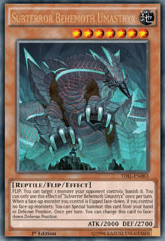 Next up is our first giant monster, Subterror Behemoth Stalagmo. This Level 10 monster clocks in at 2800 ATK power, and it also serves as the draw power for the deck. Sure, it needs to be flipped in order to get your discard and draw 2, but when your deck is built to revolve around effective flipping, that is not too much of a downside. On the other front, we have the other giant, Subterror Behemoth Umastryx. This Level 7 monster clocks in at only 2000 ATK, but it is the more defensive out of the two after all. Unlike Stalagmo which is just about giving you advantage, Umastryx takes away your opponent’s card advantage by banishing a monster your opponent controls. Even though it does target and the Kozmo monsters still exist, it can technically hold its own by removing most enemy threats you will encounter. These two monsters don’t cover every situation just yet, but I’m hopeful that the Behemoths will grow to be even more effective after future sets of support!
Next up is our first giant monster, Subterror Behemoth Stalagmo. This Level 10 monster clocks in at 2800 ATK power, and it also serves as the draw power for the deck. Sure, it needs to be flipped in order to get your discard and draw 2, but when your deck is built to revolve around effective flipping, that is not too much of a downside. On the other front, we have the other giant, Subterror Behemoth Umastryx. This Level 7 monster clocks in at only 2000 ATK, but it is the more defensive out of the two after all. Unlike Stalagmo which is just about giving you advantage, Umastryx takes away your opponent’s card advantage by banishing a monster your opponent controls. Even though it does target and the Kozmo monsters still exist, it can technically hold its own by removing most enemy threats you will encounter. These two monsters don’t cover every situation just yet, but I’m hopeful that the Behemoths will grow to be even more effective after future sets of support!
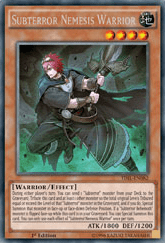 As for our final archetype member, we have the sole defender of Shambhala, Subterror Nemesis Warrior. Fun fact, he is the little guy in both of the artworks of the Behemoths!!! Warrior is quite different from the two Behemoth monsters, as it isn’t a FLIP monster and it doesn’t Special Summon itself from the hand or flip itself face-down. Rather, it actually supports the other Subterrors by bringing them out from the deck. First, you send a Subterror from your Deck to the Graveyard, then you tribute monsters (including Warrior) whose total Levels is greater than or equal to the sent Subterror’s Level, then you get to Special Summon that sent Subterror. While this is a pure minus in card advantage, it does combo well with The Hidden City as you can immediately flip down and then flip back up your summoned Subterror. Second fun fact of the paragraph, you can actually use this quick effect to allow another monster you control to dodge Effect Veiler, since you can tribute it and whatever your opponent attempts to negate in order to summon out Stalagmo or Umastryx. Now Warrior has one final effect, it can Special Summon itself from your Graveyard whenever a Subterror is flipped face-up. This is important for multiple reasons, the biggest of which being that you can craft the chain so that your Subterror Behemoth flip effect is ‘shielded’ and unable to be negated by a trap such as Solemn Strike. Also, a Level 4 effect monster that can continuously be brought back from the Graveyard can serve as excellent Xyz Material, especially when R4NK offers such a wide range of solutions to common problems.
As for our final archetype member, we have the sole defender of Shambhala, Subterror Nemesis Warrior. Fun fact, he is the little guy in both of the artworks of the Behemoths!!! Warrior is quite different from the two Behemoth monsters, as it isn’t a FLIP monster and it doesn’t Special Summon itself from the hand or flip itself face-down. Rather, it actually supports the other Subterrors by bringing them out from the deck. First, you send a Subterror from your Deck to the Graveyard, then you tribute monsters (including Warrior) whose total Levels is greater than or equal to the sent Subterror’s Level, then you get to Special Summon that sent Subterror. While this is a pure minus in card advantage, it does combo well with The Hidden City as you can immediately flip down and then flip back up your summoned Subterror. Second fun fact of the paragraph, you can actually use this quick effect to allow another monster you control to dodge Effect Veiler, since you can tribute it and whatever your opponent attempts to negate in order to summon out Stalagmo or Umastryx. Now Warrior has one final effect, it can Special Summon itself from your Graveyard whenever a Subterror is flipped face-up. This is important for multiple reasons, the biggest of which being that you can craft the chain so that your Subterror Behemoth flip effect is ‘shielded’ and unable to be negated by a trap such as Solemn Strike. Also, a Level 4 effect monster that can continuously be brought back from the Graveyard can serve as excellent Xyz Material, especially when R4NK offers such a wide range of solutions to common problems.
Now there is an elephant in the room when it comes to these two archetypes – they only have four cards each. Four cards cannot effectively constitute a proper deck, so you really have to be innovative in order to figure out what would combine well. While each of these variants are designed around enabling and abusing the Subterror monsters, they can often take a bit of a backseat to the bigger and more complete archetypes they are supporting. Hopefully I can actually begin to work with more pure-ish variants with the next batch of support, but for now, I will be turning to a couple of hybrids. Let’s check out the first strategy that melds our Subterrors with the Prediction Princess archetype!
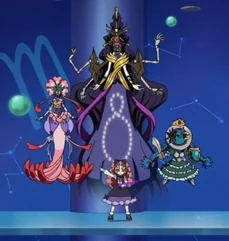
Strategy One: Prediction Subterror
 Ah, the Prediction Princess archetype. Originally hailed as the savior for the Shaddoll archetype after its fall from grace due to the Forbidden/Limited list, this ritual-based FLIP archetype actually brings a lot to the table for our Subterrors. Prediction Princess Coinorma is the first support card that really benefits us – whenever it is flipped face-up, it lets you Special Summon any FLIP monster from your deck into face-down defense. So in other words, it tutors our Subterror Behemoths directly to the field. It also happens to be Level 3, which allows for Subterror Nemisis Warrior to tribute itself and Coinorma to send and then subsequently bring out Umastryx. However, the biggest support card for the Subterrors is clearly the boss of the Prediction Princess archetype – Prediction Princess Tarotrei. It is said that she is a godsend to any and all FLIP decks, and that definitely holds true here. First, she gets to Special Summon a FLIP monster from your hand or Graveyard in face-down defense during each of your End Phases. Secondly, she has a quick effect to either flip any face-down monster face-up, or any face-up monster face-down. So not only does she mitigate the issue of getting enough FLIP monsters to the field, but it also provides a way to flip them face-up or face-down on either player’s turn. Even better still, her Ritual Spell card can also search out a Prediction Princess monster by simply banishing it from the Graveyard, so you are pretty much guaranteed to make up for any loss in card advantage when you Ritual Summoned. But what will you be tributing for this Ritual Summon? Stalagmo of course, since it is Level 10 and perfect to immediately summon back to the field during the End Phase!
Ah, the Prediction Princess archetype. Originally hailed as the savior for the Shaddoll archetype after its fall from grace due to the Forbidden/Limited list, this ritual-based FLIP archetype actually brings a lot to the table for our Subterrors. Prediction Princess Coinorma is the first support card that really benefits us – whenever it is flipped face-up, it lets you Special Summon any FLIP monster from your deck into face-down defense. So in other words, it tutors our Subterror Behemoths directly to the field. It also happens to be Level 3, which allows for Subterror Nemisis Warrior to tribute itself and Coinorma to send and then subsequently bring out Umastryx. However, the biggest support card for the Subterrors is clearly the boss of the Prediction Princess archetype – Prediction Princess Tarotrei. It is said that she is a godsend to any and all FLIP decks, and that definitely holds true here. First, she gets to Special Summon a FLIP monster from your hand or Graveyard in face-down defense during each of your End Phases. Secondly, she has a quick effect to either flip any face-down monster face-up, or any face-up monster face-down. So not only does she mitigate the issue of getting enough FLIP monsters to the field, but it also provides a way to flip them face-up or face-down on either player’s turn. Even better still, her Ritual Spell card can also search out a Prediction Princess monster by simply banishing it from the Graveyard, so you are pretty much guaranteed to make up for any loss in card advantage when you Ritual Summoned. But what will you be tributing for this Ritual Summon? Stalagmo of course, since it is Level 10 and perfect to immediately summon back to the field during the End Phase!
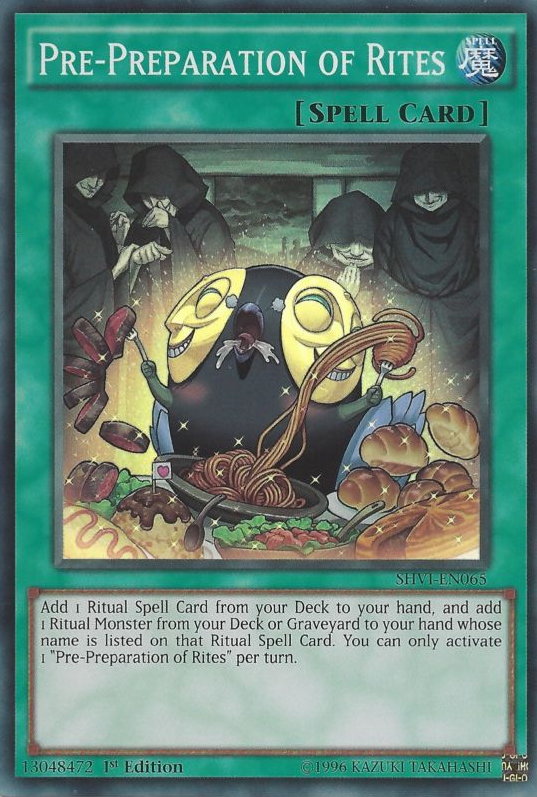 As you can imagine, these two archetypes work rather well with one another. Across the various Yugioh communities of the internet, it seems as though the general opinion is that this build will be the one to watch as future sets of support are released for our underground premiere archetype. Prices for Tarotrei and Pre-Preparation of Rites soared recently as well, so some duelists must be rather optimistic to invest in such cards. Again, the strengths and sheer search power of this build, in part due to Manju, the Prediction Princesses, and even Spirit of the Fall Wind, give this hybrid a competitive edge that can make it extremely tough to beat. With so much search power and advantage generation, it would be very difficult to make the deck completely unusable even if you tried. Check out the spoiler below to see a sample decklist, one that I’ve built by taking into consideration a lot of the deck theory being thrown around concerning the Subterrors as of late.
As you can imagine, these two archetypes work rather well with one another. Across the various Yugioh communities of the internet, it seems as though the general opinion is that this build will be the one to watch as future sets of support are released for our underground premiere archetype. Prices for Tarotrei and Pre-Preparation of Rites soared recently as well, so some duelists must be rather optimistic to invest in such cards. Again, the strengths and sheer search power of this build, in part due to Manju, the Prediction Princesses, and even Spirit of the Fall Wind, give this hybrid a competitive edge that can make it extremely tough to beat. With so much search power and advantage generation, it would be very difficult to make the deck completely unusable even if you tried. Check out the spoiler below to see a sample decklist, one that I’ve built by taking into consideration a lot of the deck theory being thrown around concerning the Subterrors as of late.
Spoiler
Main Deck:||| Subterror Behemoth Stalagmo
| Pot of Taboos
||| Subterror Behemoth Umastryx
|| Subterror Nemesis Warrior
|| Spirit of the Fall Wind
||| Manju of the Ten Thousand Hands
|| Kagetokage
| Prediction Princess Coinorma
||| Prediction Princess Tarotrei
||| Pre-Preparation of Rites
||| Terraforming
||| Prediction Ritual
||| The Hidden City
| Ritual Sanctuary **Soon to be released for the TCG in Dragons of Legend: Unleashed on August 18th/19th**
||| Book of Eclipse
||| Solemn Strike
| Solemn Warning
Extra Deck:
| Number 81: Superdreadnought Rail Cannon Super Dora
| Number 35: Ravenous Tarantula
| Phantom Fortress Enterblathnir
| Red-Eyes Flare Metal Dragon
| Number 11: Big Eye
| Mecha Phantom Beast Dracossack
| Number S39: Utopia the Lightning
| Number 39: Utopia
| King of the Feral Imps
| Super Quantal Mech Beast Aeroboros
| Castel, the Skyblaster Musketeer
| Diamond Dire Wolf
| Daigusto Emeral
| Abyss Dweller
| Gagaga Cowboy
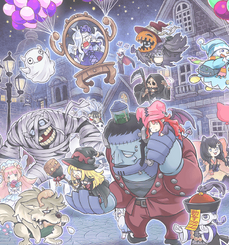
Strategy Two: Terrors of the Night
While our first variant truly extends from the Subterrors FLIP nature, this second variant is more about finding a method to summon our Behemoths most effectively onto the field. After all, they are not the first archetype to deal with flipping themselves facedown. 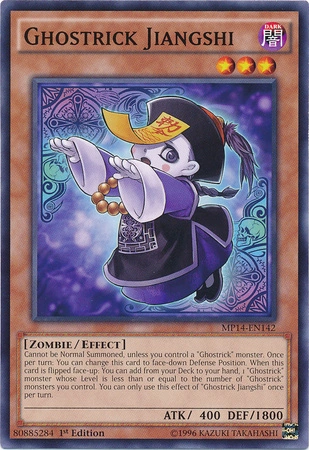 Remember, they share the effect to Special Summon themselves from the hand whenever a face-up monster is flipped face-down, and you don’t have any other face-up monsters. Now what other archetype is known to do that… SPOOKS! Yup, we’re calling in the Ghostricks for an early Halloween! The Ghostrick archetype is a set of Fiend, Spellcaster, Zombie, and Fairy-type monsters that revolve around flipping themselves face-up then back face-down. Some of them have flip effects of their own, but they bring superb monster disruption to the table, as many support cards actually can respond in the middle of your opponent’s turn, flipping key monsters face-down. While the Ghostrick theme was overwhelmingly seen as a complete failure from a competitive standpoint, the theme actually can hold its own in certain matchups. I will admit, it is a very difficult theme to play correctly – pretty much one mistake can cost you the entire duel if you over-commit to the field. But thankfully, the Subterrors do not have this Achilles heel, so the two pair even better with one another by giving you a bit of a safety net in the case of a misplay or two.
Remember, they share the effect to Special Summon themselves from the hand whenever a face-up monster is flipped face-down, and you don’t have any other face-up monsters. Now what other archetype is known to do that… SPOOKS! Yup, we’re calling in the Ghostricks for an early Halloween! The Ghostrick archetype is a set of Fiend, Spellcaster, Zombie, and Fairy-type monsters that revolve around flipping themselves face-up then back face-down. Some of them have flip effects of their own, but they bring superb monster disruption to the table, as many support cards actually can respond in the middle of your opponent’s turn, flipping key monsters face-down. While the Ghostrick theme was overwhelmingly seen as a complete failure from a competitive standpoint, the theme actually can hold its own in certain matchups. I will admit, it is a very difficult theme to play correctly – pretty much one mistake can cost you the entire duel if you over-commit to the field. But thankfully, the Subterrors do not have this Achilles heel, so the two pair even better with one another by giving you a bit of a safety net in the case of a misplay or two.
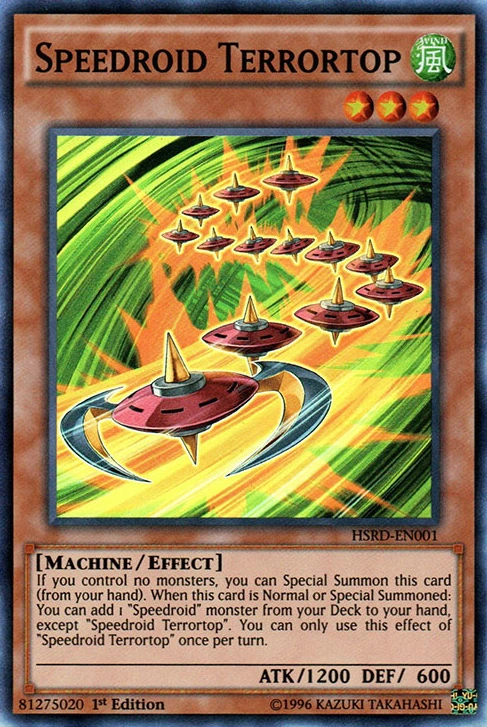 There is one final benefit to this pairing, and that actually comes in the form of another archetype completely. The Speedroid engine has proven itself worthy of competitive play, featured as one of the key elements in the PK Fire strategy that has run across both TCG and OCG metagames. This is an important engine for our purposes because of its versatility and utility for both sides of our deck. For the Subterrors, this allows you to summon M-X-Saber Invoker, which allows you to tutor a Nemesis Warrior straight from the deck. For the Ghostrick side, a Terrortop actually leads directly into Ghostrick Alucard, which then allows you to destroy a set card before summoning out the key Ghostrick searcher – Ghostrick Spoiled Angel. Let me be clear, you will almost never win with Spoiled Angels alternate win condition, but her purpose in the deck is to give you access to any and all of your Ghostrick support cards to keep your set monsters (including Subterrors) safe from targeting or destruction through the power of Ghostrick Vanish. It also searches out the Ghostrick Field Spell cards, and Ghostrick Museum is a perfect fit for a deck that wants to be able to flip itself face-down and face-up on demand. Lastly, you shouldn’t underestimate the power of Ghostrick-Go-Round, because that serves as just another quick effect that flips your Subterror monsters face-up. It even lets you get around an opponent’s S39: Utopia the Lightning, unlike The Hidden City. In terms of functionality, I actually consider this to be the most stable and competitive variant for the Subterror monsters as of right now. It has protection, disruption, card advantage generators, ways to trigger both the summoning and effects of the Subterrors, and can stall if need be. But that’s just my opinion. Check out the spoiler below to see a sample decklist, one that I’ve built by taking into consideration a lot of the deck theory being thrown around concerning both the Subterror and Ghostrick archetypes.
There is one final benefit to this pairing, and that actually comes in the form of another archetype completely. The Speedroid engine has proven itself worthy of competitive play, featured as one of the key elements in the PK Fire strategy that has run across both TCG and OCG metagames. This is an important engine for our purposes because of its versatility and utility for both sides of our deck. For the Subterrors, this allows you to summon M-X-Saber Invoker, which allows you to tutor a Nemesis Warrior straight from the deck. For the Ghostrick side, a Terrortop actually leads directly into Ghostrick Alucard, which then allows you to destroy a set card before summoning out the key Ghostrick searcher – Ghostrick Spoiled Angel. Let me be clear, you will almost never win with Spoiled Angels alternate win condition, but her purpose in the deck is to give you access to any and all of your Ghostrick support cards to keep your set monsters (including Subterrors) safe from targeting or destruction through the power of Ghostrick Vanish. It also searches out the Ghostrick Field Spell cards, and Ghostrick Museum is a perfect fit for a deck that wants to be able to flip itself face-down and face-up on demand. Lastly, you shouldn’t underestimate the power of Ghostrick-Go-Round, because that serves as just another quick effect that flips your Subterror monsters face-up. It even lets you get around an opponent’s S39: Utopia the Lightning, unlike The Hidden City. In terms of functionality, I actually consider this to be the most stable and competitive variant for the Subterror monsters as of right now. It has protection, disruption, card advantage generators, ways to trigger both the summoning and effects of the Subterrors, and can stall if need be. But that’s just my opinion. Check out the spoiler below to see a sample decklist, one that I’ve built by taking into consideration a lot of the deck theory being thrown around concerning both the Subterror and Ghostrick archetypes.
Spoiler
Main Deck:||| Subterror Behemoth Stalagmo
||| Subterror Behemoth Umastryx
|| Subterror Nemesis Warrior
||| Speedroid Terrortop
| Speedroid Taketomborg
||| Ghostrick Jiangshi
| Ghostrick Doll
||| Ghostrick Jackfrost
| Ghostrick Specter
|| Ghostrick Mary
| Reinforcement of the Army
||| Terraforming
| Ghostrick Museum
||| The Hidden City
| Ghostrick Vanish
|| Floodgate Trap Hole
|| Ghostrick Scare
| Ghostrick-Go-Round
| Ghostrick Night
| Solemn Warning
|| Solemn Strike
Extra Deck:
| Number 35: Ravenous Tarantula
| Number 11: Big Eye
||| Ghostrick Spoiled Angel
|| Ghostrick Alucard
|| Ghostrick Dullahan
| Castel, the Skyblaster Musketeer
| Daigusto Emeral
| The Phantom Knights of Break Sword
| Super Quantal Mech Beast Grampulse
| M-X-Saber Invoker
| Number F0: Utopia Future
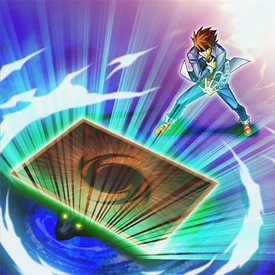
Tech Options for Subterror Variants:
- Swarm of Scarabs
- Why in particular this P.A.C.M.A.N. monster and not Medusa Worm? Because it is a Level 3 to combo with Nemesis Warrior in order to bring out Umastryx. Also, you don’t have to be running any other Ghostrick cards to get mileage out of it.
- Book of Eclipse
- Not only does it set all monsters on the field to interrupt your opponent’s plays, but it also sets any Subterrors you may have face-up on your field.
- Exodius the Ultimate Forbidden Lord
- Allows you to return all of your Graveyard Subterrors back to the deck to be re-searched by The Hidden City. Additionally, it gets you a second Level 10 easily to the field to make a Rank 10 Xyz Summon.
- Geargiarmor, Geargianchor, Geargiattacker
- These three EARTH monsters are your bread and butter for a separate variant that functions similarly to the Ghostrick one, except with a greater focus on R4NK Xyz Summons. Again, this is just a tech engine option.
- Burst Rebirth
- The themed Call of the Haunted for FLIP monsters since it summons from the Graveyard in face-down defense, just it carries a hefty cost. Also, Call of the Haunted or Oasis of the Dragon Lords performs the same role for our Subterrors since they can flip themselves face-down.
- Glow-Up Bulb
- A bit of a unique tech card, can be used with any Level 4 EARTH, such as Subterror Nemesis Warrior, in order to make Naturia Beast.
- Emergency Teleport, Re-Cover
- The Teleport engine can be used in here as an alternate way to get to Naturia Beast. While it is not quite as powerful at the moment due to the meta featuring powerful monster effects, it can still put in a decent amount of work. Also, this is a much bigger deckspace investment than Bulb.
- The Shallow Grave
- Want to bring back a monster from your Graveyard? If you have The Hidden City, you can bring back Subterror Behemoth Umastryx and immediately banish whatever your opponent just summoned.
- Hieratic Dragon of Tefnuit, Hieratic Dragon of Su, Hieratic Dragon of Eset
- You can actually build a Hieratic Subterror deck to benefit from tributing off your Hieratic monsters with Subterror Nemesis Warrior. The best part is that these Hieratics summon out another monster for you to use to bring out a second Subterror with your Nemesis (that returns from the Graveyard) during your opponent’s following turn. But in all honestly, this build just uses the Hieratics more effectively alone than with Subterror.

The SPYRAL:
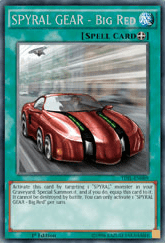 **Insert generic spy intro music here** It’s time to finally unveil our second TCG World Premiere archetype debuting in TDIL – the SPYRAL! The theme is a mashup of James Bond and Metal Gear references in terms of inspiration, but at its heart, it features a super spy, his backup, and his fancy gadgets. The entire theme revolves around SPYRAL Super Agent, just like how every single James Bond movie revolves about the one spy with practically no backup outside of a techie named Q and a supermodel. While we haven’t got around to receiving any supermodel support monsters just yet, we do have our technician, SPYRAL Quik-Fix! See how his name starts with “Q”… the references man, the references. As for the Metal Gear side of things, the SPYRAL GEAR is a sub-archetype that supports our monsters even more. Plus, Super Agent, Quik-Fix, and Drone all have direct references to the Metal Gear games: Solid Snake, Otacon, and Cipher respectively. The obvious reference is literally just right there in the card name, this time even in all caps. Anyways, let’s get back to the real reason for this article – gameplay. The SPYRAL archetype, much like espionage organizations in the real world, is all about gaining information, subverting your opponent’s options, and using that information to your advantage. The archetype truly plays like no other deck, and I truly don’t think it can be compared to any existing theme. A common trend among existing support is the pretty much sheer ignorance of the Normal Summon restriction, since both Super Agent and Quik-Fix can easily Special Summon themselves, plus you have an in-theme Premature Burial in the form of SPYRAL GEAR – Big Red. Other than that, each of the existing cards perform much differently from one another, so there really is no other over-arching common aspects to discuss.
**Insert generic spy intro music here** It’s time to finally unveil our second TCG World Premiere archetype debuting in TDIL – the SPYRAL! The theme is a mashup of James Bond and Metal Gear references in terms of inspiration, but at its heart, it features a super spy, his backup, and his fancy gadgets. The entire theme revolves around SPYRAL Super Agent, just like how every single James Bond movie revolves about the one spy with practically no backup outside of a techie named Q and a supermodel. While we haven’t got around to receiving any supermodel support monsters just yet, we do have our technician, SPYRAL Quik-Fix! See how his name starts with “Q”… the references man, the references. As for the Metal Gear side of things, the SPYRAL GEAR is a sub-archetype that supports our monsters even more. Plus, Super Agent, Quik-Fix, and Drone all have direct references to the Metal Gear games: Solid Snake, Otacon, and Cipher respectively. The obvious reference is literally just right there in the card name, this time even in all caps. Anyways, let’s get back to the real reason for this article – gameplay. The SPYRAL archetype, much like espionage organizations in the real world, is all about gaining information, subverting your opponent’s options, and using that information to your advantage. The archetype truly plays like no other deck, and I truly don’t think it can be compared to any existing theme. A common trend among existing support is the pretty much sheer ignorance of the Normal Summon restriction, since both Super Agent and Quik-Fix can easily Special Summon themselves, plus you have an in-theme Premature Burial in the form of SPYRAL GEAR – Big Red. Other than that, each of the existing cards perform much differently from one another, so there really is no other over-arching common aspects to discuss.
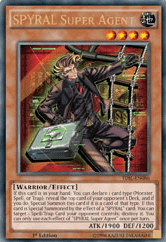 Let’s begin with our key superstar that is truly the center of the archetype as of now – SPYRAL Super Agent. He is a Level 4 EARTH/Warrior monster, perfect for either R4NK or summoning out Naturia Beast, and he brings a killer effect to the table. By choosing between Monster/Spell/Trap, you can reveal the top card of the opponent’s deck and if you guessed correctly, you get to Special Summon him directly from the hand. If you guessed wrong, you can always just Normal Summon him or simply wait until next turn to try again. However, it’s what happens when he is summoned that makes him powerful. If Super Agent is Special Summoned by the effect of any SPYRAL card (including itself), you can destroy a Spell/Trap card on your opponent’s side of the field. Now in a vacuum, Super Agent is pretty much just a glorified Photon Thrasher that can be summoned even if you already have a monster, is EARTH for Naturia Synchros, and it destroys a backrow on Summon. These aspects of Super Agent really make him fairly splashable into many different variants, which I will be sure to go into more detail about later on. We will definitely be returning to this guy while discussing the rest of the SPYRAL cards, so let’s move on for the time being.
Let’s begin with our key superstar that is truly the center of the archetype as of now – SPYRAL Super Agent. He is a Level 4 EARTH/Warrior monster, perfect for either R4NK or summoning out Naturia Beast, and he brings a killer effect to the table. By choosing between Monster/Spell/Trap, you can reveal the top card of the opponent’s deck and if you guessed correctly, you get to Special Summon him directly from the hand. If you guessed wrong, you can always just Normal Summon him or simply wait until next turn to try again. However, it’s what happens when he is summoned that makes him powerful. If Super Agent is Special Summoned by the effect of any SPYRAL card (including itself), you can destroy a Spell/Trap card on your opponent’s side of the field. Now in a vacuum, Super Agent is pretty much just a glorified Photon Thrasher that can be summoned even if you already have a monster, is EARTH for Naturia Synchros, and it destroys a backrow on Summon. These aspects of Super Agent really make him fairly splashable into many different variants, which I will be sure to go into more detail about later on. We will definitely be returning to this guy while discussing the rest of the SPYRAL cards, so let’s move on for the time being.
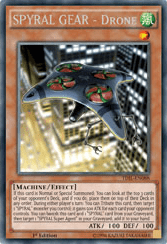 The next SPYRAL monster is the theme’s eye in the sky – introducing SPYRAL GEAR – Drone. This card both sets up Super Agent AND provides your SPYRAL monsters with the attack power they need in order to defeat your opponent. Whenever the Drone is Normal or Special Summoned, you get to look at the top three cards of your opponent’s deck, and then place them in whatever order you like. Key Point – this adjustment of your opponent’s immediate future is NOT revealed to them, so only you gain this important information. Additionally, don’t forget that SPYRAL Super Agent works best if you can ‘guess’ the top card type of your opponent’s deck. Which is why you never want to leave that ‘guess’ up to chance. Drone’s second effect is a bit more impressive – by tributing itself, it can raise the ATK of any SPYRAL you control by 500 for each card your opponent controls, permanently. Even if your opponent only has 2 backrow on the field, that means your Agent is now set at 2900 ATK. Now imagine what would happen if you were able to use multiple of this Drone effect in the same turn (or even over multiple turns) – your Agent really could reach over 8000 ATK points. The final effect of Drone may seem like an afterthought, but it does provide the deck with even more longevity. By banishing it and one other SPYRAL card from your Graveyard, you get to add a Super Agent back from your Graveyard to the hand. Again, this effect is all about giving your deck a late-game, because you can always have a way to recover the cards you need to keep active within the duel.
The next SPYRAL monster is the theme’s eye in the sky – introducing SPYRAL GEAR – Drone. This card both sets up Super Agent AND provides your SPYRAL monsters with the attack power they need in order to defeat your opponent. Whenever the Drone is Normal or Special Summoned, you get to look at the top three cards of your opponent’s deck, and then place them in whatever order you like. Key Point – this adjustment of your opponent’s immediate future is NOT revealed to them, so only you gain this important information. Additionally, don’t forget that SPYRAL Super Agent works best if you can ‘guess’ the top card type of your opponent’s deck. Which is why you never want to leave that ‘guess’ up to chance. Drone’s second effect is a bit more impressive – by tributing itself, it can raise the ATK of any SPYRAL you control by 500 for each card your opponent controls, permanently. Even if your opponent only has 2 backrow on the field, that means your Agent is now set at 2900 ATK. Now imagine what would happen if you were able to use multiple of this Drone effect in the same turn (or even over multiple turns) – your Agent really could reach over 8000 ATK points. The final effect of Drone may seem like an afterthought, but it does provide the deck with even more longevity. By banishing it and one other SPYRAL card from your Graveyard, you get to add a Super Agent back from your Graveyard to the hand. Again, this effect is all about giving your deck a late-game, because you can always have a way to recover the cards you need to keep active within the duel.
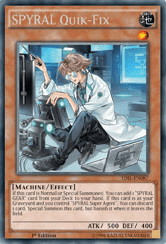 Next up on our list of awesome support cards, we have SPYRAL Quik-Fix. This Level 1 Machine-type boasts 500 ATK, and while that means it cannot do too much in battle alone, that is the magic number for Machine-type monsters. Machine Duplication really is a powerful card, but it is even better due to Quik-Fix’s first effect. Whenever it is Normal or Special Summoned, you get to add one of your SPYRAL GEAR support cards from your deck to the hand. Now this includes the above Drone, but it also includes our final piece of support, SPYRAL GEAR – Big Red. This Equip Spell is pretty much Premature Burial, because it lets you Special Summon a SPYRAL from your Graveyard, but you also get the added benefit that said monster cannot be destroyed in battle. Also, be sure to notice that this does trigger Super Agent’s destruction effect, so you can get a summon and backrow removal out of one searchable Spell. Returning back to Quik-Fix, he does have a second effect as well. If he is in the Graveyard while you control Super Agent, you can discard a card to Special Summon Quik back to your field. Which then triggers its search effect, so it is effectively a pure +1 in card advantage. At the end of the day, it’s Quik-Fix that provides the pure card advantage, Super Agent that provides the swarm, and Drone that provides information, late-game recovery, and intangible pressure. All around, the SPYRAL organization is quite effective despite its small size. But with these types of potent effects, the sky is pretty much the limit when it comes to variants!
Next up on our list of awesome support cards, we have SPYRAL Quik-Fix. This Level 1 Machine-type boasts 500 ATK, and while that means it cannot do too much in battle alone, that is the magic number for Machine-type monsters. Machine Duplication really is a powerful card, but it is even better due to Quik-Fix’s first effect. Whenever it is Normal or Special Summoned, you get to add one of your SPYRAL GEAR support cards from your deck to the hand. Now this includes the above Drone, but it also includes our final piece of support, SPYRAL GEAR – Big Red. This Equip Spell is pretty much Premature Burial, because it lets you Special Summon a SPYRAL from your Graveyard, but you also get the added benefit that said monster cannot be destroyed in battle. Also, be sure to notice that this does trigger Super Agent’s destruction effect, so you can get a summon and backrow removal out of one searchable Spell. Returning back to Quik-Fix, he does have a second effect as well. If he is in the Graveyard while you control Super Agent, you can discard a card to Special Summon Quik back to your field. Which then triggers its search effect, so it is effectively a pure +1 in card advantage. At the end of the day, it’s Quik-Fix that provides the pure card advantage, Super Agent that provides the swarm, and Drone that provides information, late-game recovery, and intangible pressure. All around, the SPYRAL organization is quite effective despite its small size. But with these types of potent effects, the sky is pretty much the limit when it comes to variants!

Strategy One: SPYRAL Number One
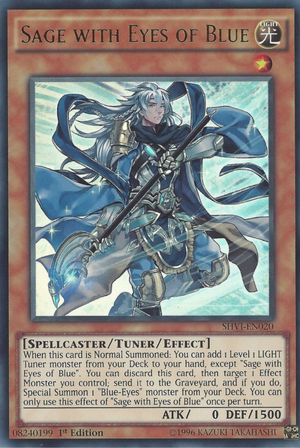 We’ve talked about the potential of the SPYRAL archetype, but we haven’t really discussed its synergy with other archetypes. In my experience, I’ve found that the SPYRAL archetype functions quite differently than Subterrors – the spies actually function quite well as a engine. For any new engine that is created in our TCG, players generally gravitate as a first response to attempt to pair this engine with others to make a functional variant. Thus, what better way to start off our SPYRAL variants. In this case, we will be combining a number of smaller engines that add versatility, disruption, and a bit of speed to your deck. Naturally, the first one that comes to mind is Speedroids. They’re quick, Speedroid Terrortop offers 1-card Xyz or Synchro summons, and it is an excellent start to a duel in which you must go first. The secondary engine is one I actually prefer more, and that is the Sage engine. It’s just 2 Sage with Eyes of Blue and 2 Effect Veiler (some duelists also choose to include 1 copy of Dragon Spirit of White), but this small engine gives you access to more Level 1 monsters and also Veiler straight to the hand.
We’ve talked about the potential of the SPYRAL archetype, but we haven’t really discussed its synergy with other archetypes. In my experience, I’ve found that the SPYRAL archetype functions quite differently than Subterrors – the spies actually function quite well as a engine. For any new engine that is created in our TCG, players generally gravitate as a first response to attempt to pair this engine with others to make a functional variant. Thus, what better way to start off our SPYRAL variants. In this case, we will be combining a number of smaller engines that add versatility, disruption, and a bit of speed to your deck. Naturally, the first one that comes to mind is Speedroids. They’re quick, Speedroid Terrortop offers 1-card Xyz or Synchro summons, and it is an excellent start to a duel in which you must go first. The secondary engine is one I actually prefer more, and that is the Sage engine. It’s just 2 Sage with Eyes of Blue and 2 Effect Veiler (some duelists also choose to include 1 copy of Dragon Spirit of White), but this small engine gives you access to more Level 1 monsters and also Veiler straight to the hand.
 So why are Level 1 monsters important? Combined with Quik-Fix, the SPYRAL actually serve as great fodder for near endless chains of Rank 1 Xyz Summons. Despite the fact that Sylvan Princessprite, easily one of the best Rank 1 monsters, does not have a TCG release date in sight, you can still rely upon Ghostrick Dullahan and Ghostrick Spoiled Angel to provide an effective set of boss monsters. Additionally, since Quik-Fix can continue to Special Summon itself as long as you have a card in hand and a Super Agent face-up, it is always great to have that additional Xyz Material to leave under your monster, since Quik-Fix needs to get to the Graveyard to be summoned again. Since we’re going to be abusing the Rank 1 so much as well as Ghostrick Xyz monsters, it only makes sense to tech in a couple of Ghostrick Jackfrost as a hand trap for the Battle Phase. Then, since we are running so many Level 1 monsters, Where Arf Thou becomes an effective searcher for your Quik-Fix or Drone as need be, and you can also tech in Kinka Byo as well for even more Drone activations. Since Drone tributes itself before the End Phase, it will never get banished by Kinka’s effect.
So why are Level 1 monsters important? Combined with Quik-Fix, the SPYRAL actually serve as great fodder for near endless chains of Rank 1 Xyz Summons. Despite the fact that Sylvan Princessprite, easily one of the best Rank 1 monsters, does not have a TCG release date in sight, you can still rely upon Ghostrick Dullahan and Ghostrick Spoiled Angel to provide an effective set of boss monsters. Additionally, since Quik-Fix can continue to Special Summon itself as long as you have a card in hand and a Super Agent face-up, it is always great to have that additional Xyz Material to leave under your monster, since Quik-Fix needs to get to the Graveyard to be summoned again. Since we’re going to be abusing the Rank 1 so much as well as Ghostrick Xyz monsters, it only makes sense to tech in a couple of Ghostrick Jackfrost as a hand trap for the Battle Phase. Then, since we are running so many Level 1 monsters, Where Arf Thou becomes an effective searcher for your Quik-Fix or Drone as need be, and you can also tech in Kinka Byo as well for even more Drone activations. Since Drone tributes itself before the End Phase, it will never get banished by Kinka’s effect.
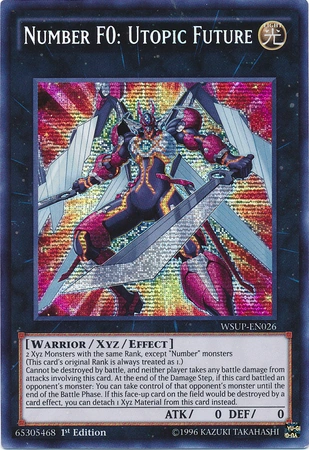 But the biggest question when it comes to a new theme is always win condition, and that is where this deck relies heavily on the SPYRAL monsters. Drone adjusting your opponent’s draws every single turn is great, but it does not mean enough if you cannot capitalize and win in a controlled environment. That is where our final off-theme boss monster comes in – Number F0: Utopic Future. Once you summon this guy to the field, your opponent is left with two options – Summon a minimal number of monsters to avoid letting Drone boost your Agent too high, or Summon a ton of monsters to stop Utopic Future from clearing a free path to their LP. With this pressure on top of the already existing pressure from Drone’s manipulation, your spies can easily and deftly guide the duel towards victory. Just be sure to make a couple of Archer jokes alogn the way. Let’s go ahead and check out the spoiler below in order to see the ratios and techs I am using in my build.
But the biggest question when it comes to a new theme is always win condition, and that is where this deck relies heavily on the SPYRAL monsters. Drone adjusting your opponent’s draws every single turn is great, but it does not mean enough if you cannot capitalize and win in a controlled environment. That is where our final off-theme boss monster comes in – Number F0: Utopic Future. Once you summon this guy to the field, your opponent is left with two options – Summon a minimal number of monsters to avoid letting Drone boost your Agent too high, or Summon a ton of monsters to stop Utopic Future from clearing a free path to their LP. With this pressure on top of the already existing pressure from Drone’s manipulation, your spies can easily and deftly guide the duel towards victory. Just be sure to make a couple of Archer jokes alogn the way. Let’s go ahead and check out the spoiler below in order to see the ratios and techs I am using in my build.
Spoiler
Main Deck:||| SPYRAL Super Agent
||| Speedroid Terrortop
|| Speedroid Taketomborg
||| SPYRAL Quik-Fix
||| SPYRAL GEAR – Drone
|| Sage with Eyes of Blue
|| Effect Veiler
| Speedroid Red-Eyed Dice
|| Ghostrick Jackfrost
| Kinka Byo
||| Instant Fusion
| One for One
| Reinforcement of the Army
|| Where Arf Thou?
||| Machine Duplication
|| Cosmic Cyclone
||| SPYRAL GEAR – Big Red
|| Solemn Strike
| Solemn Warning
Extra Deck:
| Elder Entity Norden
| Thousand-Eyes Restrict
| Trishula, Dragon of the Ice Barrier
| Hi-Speedroid Chanbara
|| Ghostrick Spoiled Angel
| Leviair the Sea Dragon
| The Phantom Knights of Break Sword
| Totem Bird
| M-X-Saber Invoker
||| Ghostrick Alucard
| Number 83: Galaxy Queen
| Number F0: Utopic Future

Strategy Two: DARK Spy-chro
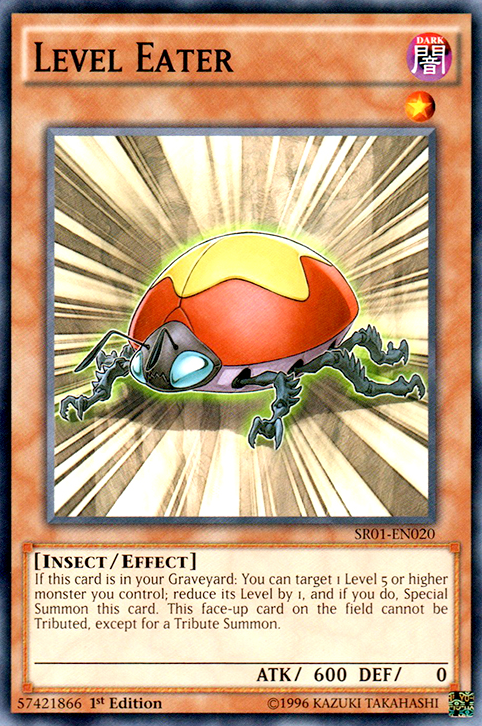 Sorry for the terrible variant name pun, but I really couldn’t come up with better. I did try. DARK Synchro has been a force to be reckoned with in the OCG, topping tournaments left and right due to the sheer power of being able to loop into powerful lock-out fields. The strategy revolves around Level Eater, Destiny HERO Malicious, Blackwing – Gofu the Hazy Shadow, Plaguespreader Zombie, and Dark Grepher, and from there, builds are very open. Spell and Trap support and even more tuners are sometimes even added to help their Synchro Spam and endgame goal of Synchro domination. But this deck gets even more powerful when you include the SPYRAL, because now you have even more ways to get non-tuners onto the field, while also being able to deplete your hand of dead draws and replace them with better cards. Quik-Fix helps to ditch any unnecessary cards and change them into SPYRAL GEAR – Big Red, and that just means another backrow destroyed with Super Agent later on. Now before you act too surprised, this deck doesn’t actually feature or utilize Drone at all. For one, the strategy has its own boss monsters and win condition. And secondly, it could potentially be a sheer dead draw, as it would pretty much need to be Normal Summoned. At least Quik-Fix and Super Agent provide a bit of information or search power if you draw into them. At the end of the day, this is a very fast paced deck, so let me go over a couple of the key combos:
Sorry for the terrible variant name pun, but I really couldn’t come up with better. I did try. DARK Synchro has been a force to be reckoned with in the OCG, topping tournaments left and right due to the sheer power of being able to loop into powerful lock-out fields. The strategy revolves around Level Eater, Destiny HERO Malicious, Blackwing – Gofu the Hazy Shadow, Plaguespreader Zombie, and Dark Grepher, and from there, builds are very open. Spell and Trap support and even more tuners are sometimes even added to help their Synchro Spam and endgame goal of Synchro domination. But this deck gets even more powerful when you include the SPYRAL, because now you have even more ways to get non-tuners onto the field, while also being able to deplete your hand of dead draws and replace them with better cards. Quik-Fix helps to ditch any unnecessary cards and change them into SPYRAL GEAR – Big Red, and that just means another backrow destroyed with Super Agent later on. Now before you act too surprised, this deck doesn’t actually feature or utilize Drone at all. For one, the strategy has its own boss monsters and win condition. And secondly, it could potentially be a sheer dead draw, as it would pretty much need to be Normal Summoned. At least Quik-Fix and Super Agent provide a bit of information or search power if you draw into them. At the end of the day, this is a very fast paced deck, so let me go over a couple of the key combos:
- Level Eater + Gofu : Special Summon Gofu using its method, then Normal Summon Eater. Synchro Level 6 into Coral Dragon, then use Eater’s effect and then Synchro into Stardust Charge Warrior, then draw 2 cards.
- Dark Grepher + Plaguespreader Zombie/Level Eater : Summon Grepher, use its effect to send the monster you have plus the one you don’t to the Graveyard. Special Summon Plague, go into the Charge Warrior Combo under #1.
- Gofu + Armageddon Knight : Summon Gofu, then Normal Summon Armageddon, sending Level Eater. Eater Gofu, then Synchro into Accel Synchron. Use its effect to send Jet Synchron to the Graveyard, increasing itself to Level 6. Eater Accel, then use Jet Synchron‘s effect. Synchro 6 with Arma, Jet, and Eater. Go into Charge Warrior Combo under #1. Then, Eater Charge Warrior and send Accel and Charge to Special Summon either Stardust Warrior or Ultimaya Tzolk’in (only if you have a S/T to then set for Crystal Wing Synchro Dragon).
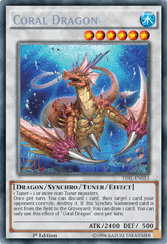 The above combos just start with 2 cards each. But consider what happens if you add a SPYRAL Quik-Fix into the mix! Combo #1 changes into: Special Summon Gofu using its method, then Normal Summon Quik-Fix and add SPYRAL GEAR – Big Red to hand. Synchro Level 6 into Coral Dragon, then use Coral discarding Eater to destroy a card. Use Eater’s effect on Coral. Use Big Red, brigning back Quik-Fix and searching a new Big Red. Synchro into Stardust Charge Warrior, then draw 2 cards. This deck is all about combinations of cards like that, simply adding extra cards that add entire new layers and steps to your plays. The deck was even thinned by even more cards by adding just one SPYRAL. This is precisely how the SPYRAL monsters and support cards add to the deck. I will be blunt, I didn’t build this variant to ignore the SPYRAL cards and just have a deck that uses them as eye candy. They really do offer a lot of benefits to the strategy. I consider this to be the most effective build right now for the spy archetype, but I’ll leave the final judgment for you to decide for yourself.
The above combos just start with 2 cards each. But consider what happens if you add a SPYRAL Quik-Fix into the mix! Combo #1 changes into: Special Summon Gofu using its method, then Normal Summon Quik-Fix and add SPYRAL GEAR – Big Red to hand. Synchro Level 6 into Coral Dragon, then use Coral discarding Eater to destroy a card. Use Eater’s effect on Coral. Use Big Red, brigning back Quik-Fix and searching a new Big Red. Synchro into Stardust Charge Warrior, then draw 2 cards. This deck is all about combinations of cards like that, simply adding extra cards that add entire new layers and steps to your plays. The deck was even thinned by even more cards by adding just one SPYRAL. This is precisely how the SPYRAL monsters and support cards add to the deck. I will be blunt, I didn’t build this variant to ignore the SPYRAL cards and just have a deck that uses them as eye candy. They really do offer a lot of benefits to the strategy. I consider this to be the most effective build right now for the spy archetype, but I’ll leave the final judgment for you to decide for yourself.
Spoiler
Main Deck:||| Destiny HERO Malicious
||| Blackwing – Gofu, the Hazy Shadow
||| SPYRAL Super Agent
||| Dark Grepher
| Armageddon Knight
| Mathematician
|| Plaguespreader Zombie
||| Level Eater
||| SPYRAL Quik-Fix
|| Jet Synchron
| Glow-Up Bulb
|| Synkron Resonator
|| Allure of Darkness
| One for One
| Reinforcement of the Army
| Back to Square One
| Soul Charge
| Foolish Burial
|| Twin Twister
| D.D.R. – Different Dimension Reincarnation
||| SPYRAL GEAR – Big Red
Extra Deck:
| Assault Blackwing – Onimaru the Divine Thunder
| Ultimaya Tzolk’in
| Stardust Warrior
| Trishula, Dragon of the Ice Barrier
| Beelze of the Diabolic Dragons
| Void Ogre Dragon
| Crystal Wing Synchro Dragon
| PSY-Framelord Omega
| Black Rose Moonlight Dragon
| Coral Dragon
| Stardust Charge Warrior
| T.G. Hyper Librarian
| Ally of Justice Catastor
| Accel Synchron
| Formula Synchron

Strategy Three: SPYRAL Embargo
 We’re using a strategy that focuses around gaining and manipulating information, so why not go full ahead with the resource control theme. This build is all about using the information you receive from Drone and Super Agent immediately to get yourself ahead in the duel. Of course, we are talking about Mind Crush and D.D. Designator. Both of these cards are amazing at capitalizing upon knowing your opponents cards, and each of them gives you full knowledge of your opponent’s hand in most cases due to confirmation rules. So if you have multiple copies, call the card you know then you can follow it up by calling a card you didn’t know before! But these aren’t the only cards that work well with having information, because the SPYRAL can also tech in two more – Prohibition and Cloak and Dagger. This is where the strategy name comes from, as you literally embargo entire cards and/or strategies from the duel. With these options, you pretty much force your opponent into lackluster choices when they attempt to play around your setup. So why in the world would a deck with these many information-based cards work on a basic level, isn’t this going too hard on a single strategy? Because, as I stated in their introduction, the SPYRAL monsters are very functional together. The suite of 4 cards we have now was clearly designed to work together and perform as a solid theme from the get-go. Taking this knowledge to heart, this means that you can even take ‘information cards’ completely out of your build, and replace them with burn Spells and Traps. And the deck will still work. Rather well if I say so myself. The SPYRAL archetype is literally a creative deckbuilder’s dream at this point, because it is so solidly designed to have potential and synergy within so many different variants. Let’s check out my sample decklist for barebones, information-centric SPYRAL!
We’re using a strategy that focuses around gaining and manipulating information, so why not go full ahead with the resource control theme. This build is all about using the information you receive from Drone and Super Agent immediately to get yourself ahead in the duel. Of course, we are talking about Mind Crush and D.D. Designator. Both of these cards are amazing at capitalizing upon knowing your opponents cards, and each of them gives you full knowledge of your opponent’s hand in most cases due to confirmation rules. So if you have multiple copies, call the card you know then you can follow it up by calling a card you didn’t know before! But these aren’t the only cards that work well with having information, because the SPYRAL can also tech in two more – Prohibition and Cloak and Dagger. This is where the strategy name comes from, as you literally embargo entire cards and/or strategies from the duel. With these options, you pretty much force your opponent into lackluster choices when they attempt to play around your setup. So why in the world would a deck with these many information-based cards work on a basic level, isn’t this going too hard on a single strategy? Because, as I stated in their introduction, the SPYRAL monsters are very functional together. The suite of 4 cards we have now was clearly designed to work together and perform as a solid theme from the get-go. Taking this knowledge to heart, this means that you can even take ‘information cards’ completely out of your build, and replace them with burn Spells and Traps. And the deck will still work. Rather well if I say so myself. The SPYRAL archetype is literally a creative deckbuilder’s dream at this point, because it is so solidly designed to have potential and synergy within so many different variants. Let’s check out my sample decklist for barebones, information-centric SPYRAL!
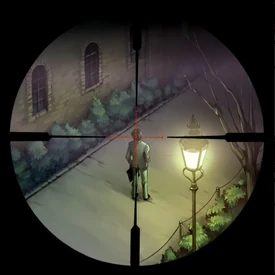
Spoiler
Main Deck:||| SPYRAL Super Agent
||| SPYRAL Quik-Fix
||| SPYRAL GEAR – Drone
| One for One
| Reinforcement of the Army
| Raigeki
||| D.D. Designatior
||| Hidden Armory
| Foolish Burial
||| Pot of Duality
||| Prohibition
||| SPYRAL GEAR – Big Red
||| Mind Crush
||| The Forceful Checkpoint
||| Cloak and Dagger
|| Solemn Strike
| Solemn Warning
Extra Deck:
| Number 78: Number Archive
| Number 81: Superdreadnought Rail Cannon Super Dora
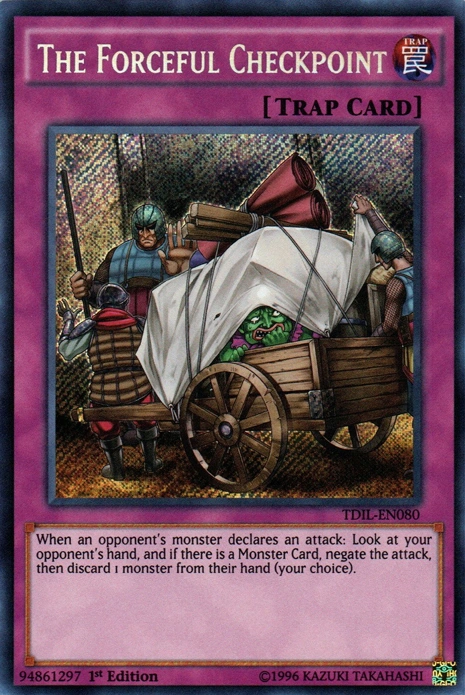
Tech Options for SPYRAL Variants:
- The Forceful Checkpoint
- Featured in the 3rd and final variant, this Trap Card works perfectly for SPYRAL because it deals in Information while at the same time providing a very useful effect. A forced discard while negating an attack is never bad, which is probably why this card was given Secret Rare status.
- Psi-Blocker
- Similar usage to Prohibition, except you can change your card-name each turn to work well with Drone. The only problem is that it can easily be destroyed in battle, but that’s what you have Checkpoint for.
- Rank-Up-Magic – Argent Chaos Force
- No, I did not list the wrong RUM, even though every SPYRAL build uses Rank 1 Xyz Monsters. This is actually used to gain access to Number 99: Utopic Dragon and Number S0: Utopic Zexal through the use of the Rank 1 Number 39: Utopia Roots. Not only can this particular Rank-Up-Magic work for both, but it also can add itself back from the Graveyard. Perfect for a deck that can always discard dead draws to gain extra searches with SPYRAL Quik-Fix.
- Turbo Booster, Jester Confit
- These Level 1 monsters Special Summon themselves to the field, giving you even more Xyz Material to work with. These function besti n the Utopic variant, but can also be used to great effect with the following engine.
- Sage with Eyes of Blue, Effect Veiler, Dragon Spirit of White
- A version of this engine appeared in the first variant, but it is important to note once more. This works wonders in any Level 1 centric variant, and SPYRAL is no exception. Also, it never hurts to have searchable handtraps or non-destruction backrow removal at your disposal.
- Glow-Up Bulb
- Literally the same reason as for why it is used in Subterror, since SPYRAL Super Agent also happens to be a Level 4 EARTH Warrior. So Naturia Beast for all!
- Emergency Teleport, Re-Cover
- This engine is a bit more usable here in SPYRAL because you do have effective ways to get rid of dead draws and turn them into useful SPYRAL GEAR support cards.
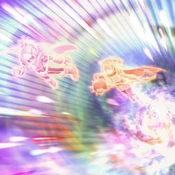
Threat Analysis and Looking Forward:
Now that you’ve seen some examples of some of the best variants rooted in design theory, let’s talk about how these two archetypes fair in the current Yu-Gi-Oh! environment. To be blunt, as much praise as I give these themes in my article, neither is Tier 1 status upon release. Each still suffers with only having a limited number of options and neither theme has enough outside support to make the deck fully operational as of now. However don’t get me wrong: I would not consider these themes entirely irrelevant at this point.  If nothing else, I expect SPYRAL Super Agent to start showing up as a replacement for Photon Thrasher for certain builds and variants. Neither of these decks have the boss monsters of Blue-Eyes, the sheer advantage gain of Dracopal, the openings of PK Fire, nor will they be able to stand toe-to-toe with the imminent threat of ABCs. But I do forsee them eventually finding their way into the meta. As for where these themes will hopefully succeed, I am confident that they will modernize their main game mechanics and bring it back into the fold of competitive Yu-Gi-Oh. Even though Shaddolls are not too far behind us in the past, they were never really designed entirely around their FLIP effects, as those effects were really only utilized to let the deck play a grind game. On the other hand, the closest archetype to abusing information like the SPYRAL is Dark World, and that is just due to the sheer power of the Virus Trap cards and Dragged Down to the Grave. So in both of these cases, we are dealing with fairly obsolete mechanics that deserve to have their chance to shine in the meta spotlight. But what chances do we expect that these themes are going to hit meta tier down the road in future support? Why should we care about them in their current state?
If nothing else, I expect SPYRAL Super Agent to start showing up as a replacement for Photon Thrasher for certain builds and variants. Neither of these decks have the boss monsters of Blue-Eyes, the sheer advantage gain of Dracopal, the openings of PK Fire, nor will they be able to stand toe-to-toe with the imminent threat of ABCs. But I do forsee them eventually finding their way into the meta. As for where these themes will hopefully succeed, I am confident that they will modernize their main game mechanics and bring it back into the fold of competitive Yu-Gi-Oh. Even though Shaddolls are not too far behind us in the past, they were never really designed entirely around their FLIP effects, as those effects were really only utilized to let the deck play a grind game. On the other hand, the closest archetype to abusing information like the SPYRAL is Dark World, and that is just due to the sheer power of the Virus Trap cards and Dragged Down to the Grave. So in both of these cases, we are dealing with fairly obsolete mechanics that deserve to have their chance to shine in the meta spotlight. But what chances do we expect that these themes are going to hit meta tier down the road in future support? Why should we care about them in their current state?
Well the first thing to consider is that there has been an established pattern with TCG World Premiere archetypes ever since the competitive failure of the Noble Knight experiment. In the past, it seemed as though one archetype was ‘destined’ to be the meta variant, while the other was meant to push the boundaries of card design and originality. The Burning Abyss archetype featured powerful effects since their debut, and the Ultra Athletes kept to the shadows with their tagging out mechanic. The Kozmo archetype warped the entirety of card design by forcing non-targeting, non-destruction monster removal back into the fold, and the Kaiju stuck to filling a supporting role for already strong archetypes that needed a couple more giant monsters. This time, the playing field has been leveled, as each theme recieved equal support in their first set. Also, both themes are really filling the unique mechanic niche. Does this mean that the themes will continue to receive equal support? I truly hope so, because I cannot wait to see each of these archetypes in their final forms. The possibilities for SPYRAL are truly endless, they are in unexplored territory. As for the Subterrors, I am exited to see the battle for Shambhala rise to new heights. Either way, these will be themes to watch.
Beyond anything else, I think the biggest hint as to what’s to come is already right under our noses, especially for Subterror. Take another look at Subterror Nemesis Warrior – specifically its first effect.
During either player’s turn: You can send 1 “Subterror” monster from your Deck to the Graveyard; Tribute this card and at least 1 other monster so that the original Levels Tributed equal or exceed the Level of that “Subterror” monster in the Graveyard, and if you do, Special Summon that monster in face-up or face-down Defense Position.
 By forcing the monster you intend to Special Summon to go to the Graveyard first, the first monster tutor of the archetype has a built-in gate and weakness. There is absolutely no reason to add an extra step like this unless the theme needs additional restrictions to curb its potential, and that should scare you about where this theme could be going. Not only that, but if the last two years have taught us anything, the World Premiere theme that is all blinged out with Secret Rares, Ultra Rares, and Ultimate Rares tends to be the meta-warping archetype. Just like Kozmotown before it, The Hidden City happens to be a Secret Rare that mitigates the downsides of the Subterror’s intended mechanic. Hmmmm……. I’ll leave the rest of that train of thought up to you. In terms of the SPYRAL, we have never had a ‘second class’ TCG premiere theme as effective out of the gates as the SPYRAL. For U.A., the deck’s only potential laid in a forgotten Spell Card, Feast of the Wild Lv5. As for Kaiju, I guess you could count Removing Brainwashing and Owner’s Seal as the official support cards. But for this spy organization, you can see just how much synergy it has with existing decks and themes, how many support cards can be included, and how many possible variants can be made. I haven’t even touched on half of the SPYRAL variants yet; there are definitely more out there for you to work with. I truly hope that you continue to pay attention to these themes as they develop, but either way, I will definitely be keeping a close eye on their potential moving forward and I will keep you updated.
By forcing the monster you intend to Special Summon to go to the Graveyard first, the first monster tutor of the archetype has a built-in gate and weakness. There is absolutely no reason to add an extra step like this unless the theme needs additional restrictions to curb its potential, and that should scare you about where this theme could be going. Not only that, but if the last two years have taught us anything, the World Premiere theme that is all blinged out with Secret Rares, Ultra Rares, and Ultimate Rares tends to be the meta-warping archetype. Just like Kozmotown before it, The Hidden City happens to be a Secret Rare that mitigates the downsides of the Subterror’s intended mechanic. Hmmmm……. I’ll leave the rest of that train of thought up to you. In terms of the SPYRAL, we have never had a ‘second class’ TCG premiere theme as effective out of the gates as the SPYRAL. For U.A., the deck’s only potential laid in a forgotten Spell Card, Feast of the Wild Lv5. As for Kaiju, I guess you could count Removing Brainwashing and Owner’s Seal as the official support cards. But for this spy organization, you can see just how much synergy it has with existing decks and themes, how many support cards can be included, and how many possible variants can be made. I haven’t even touched on half of the SPYRAL variants yet; there are definitely more out there for you to work with. I truly hope that you continue to pay attention to these themes as they develop, but either way, I will definitely be keeping a close eye on their potential moving forward and I will keep you updated.
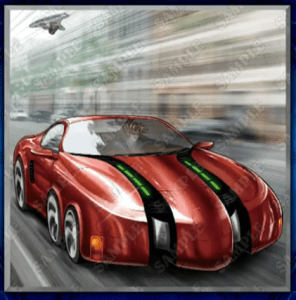
Conclusion:
Thank you for reading this first entry in my Evolution in Design series. I hope you were enlightened about the potential for these two archetypes, and I hope that you will become inspired to try them out, if not today then one day in the future. As with all of my articles, I cannot say that the decklists I presented above are the best builds above all others; they are intended to make you have a moment where you think to yourself that you have a better idea. At the end of the day, it is true deckbuilding innovation that drives the metagame in the TCG. I can only hope that these articles will help to foster the theory and strategy behind SPYRAL and Subterror decks in the future.
